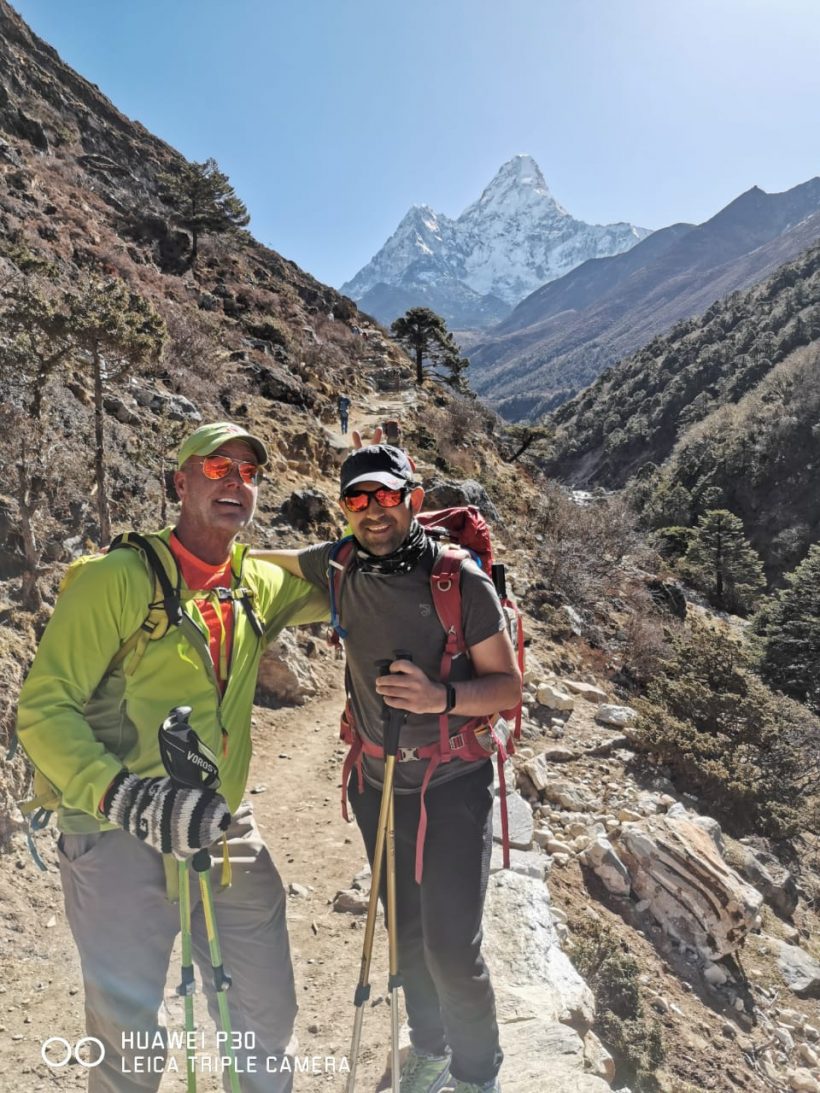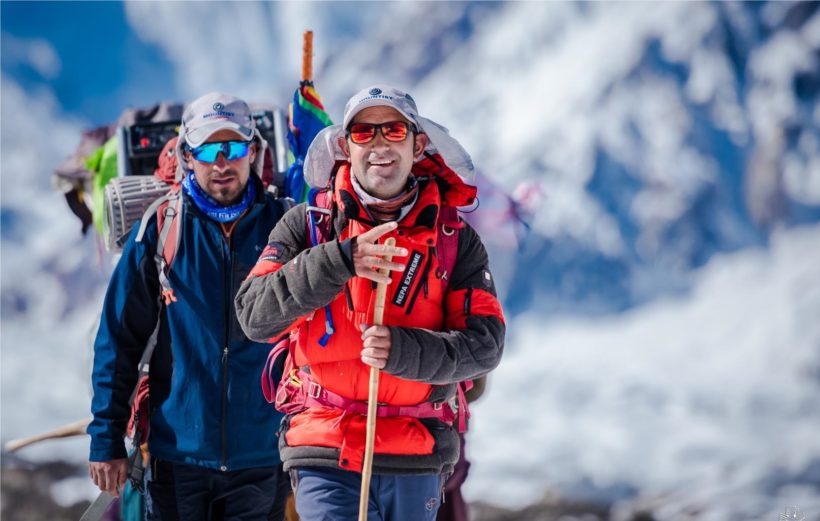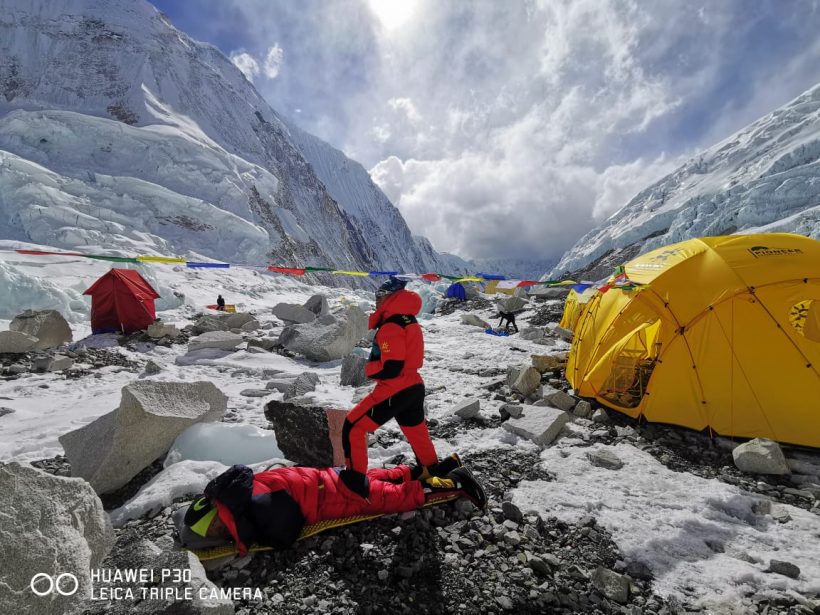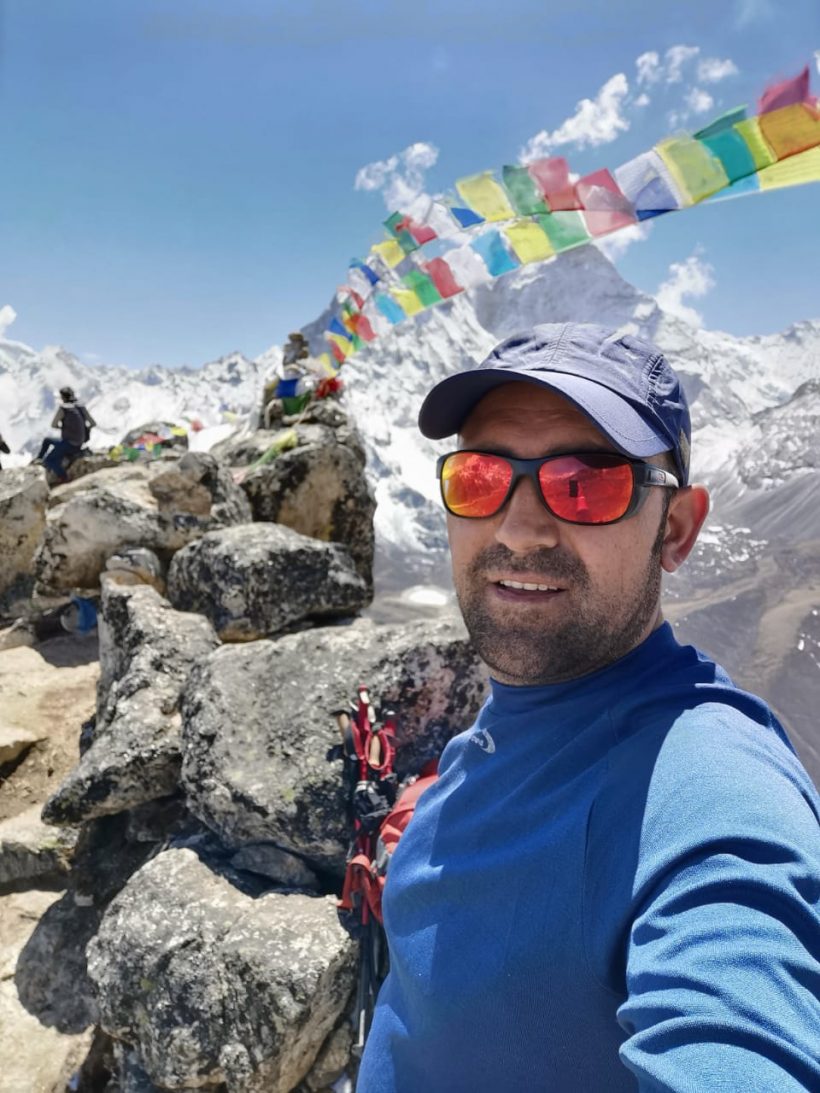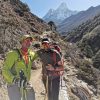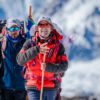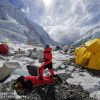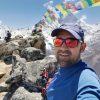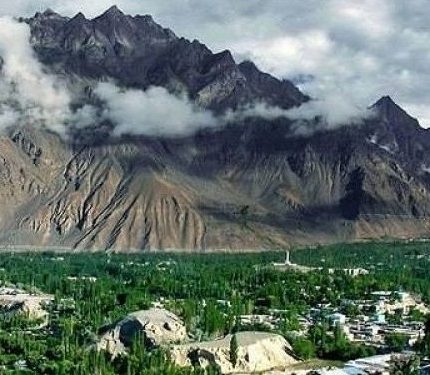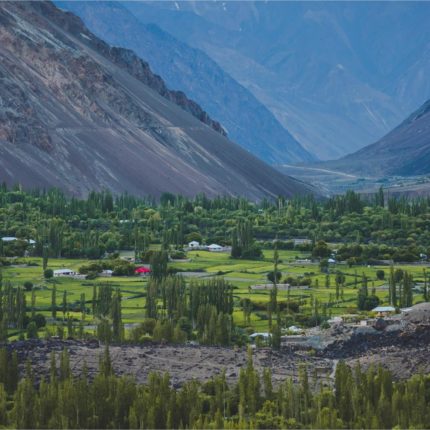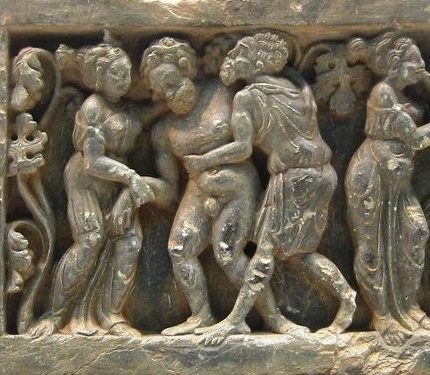Everest Base Camp trekking is a lifetime dream for many travelers. To stand at the foot of the world’s tallest mountain, Mt. Everest, and seeing high up is many people’s dream. Trekking to Everest Base Camp is the perfect opportunity to explore the lifestyle of the Himalayan people, their religion, customs and traditional way of life. Comparatively, Everest Base Camp trekking is more challenging than the Annapurna Circuit due to difficulty with altitude. On day 2 of the Everest Base Camp trek, you reach at 3,420m in Namche Bazaar. On the Annapurna Circuit, you do not gain this much altitude until Day 6. Each day, the trail involves a substantial amount of scrambling up and down on Everest Base Camp trek, whereas, the Annapurna Circuit trekking has far more gentle, flat stretches that don’t leave you heaving for breath. On the Everest Base Camp trek, you have to come down following the exact route that you climbed up before. On the Annapurna Circuit, you never have to repeat any step that you have taken at the beginning. If you are really looking for challenging trek and close-up mountain views, then Everest Base Camp might be your choice. The trek to Everest Base Camp begins after an exploration of the local temples, shrines, bazaars and restaurants in Kathmandu followed by a flight to Lukla within the mountains and continue to walk uphill through the Dudh Kosi Valley. While on the trek, you will enjoy the views of awe-inspiring peaks of Thamserku, Kusum Kanguru and Ama Dablam in the far distance. Along the trail, you will encounter unique flora and fauna, friendly Sherpa people, yaks, colorful festivals and Buddhist monasteries. Blooming of different flowers like rhododendron, magnolias, blue pine, Chir pine, juniper, and hemlock make the Everest Base Camp trek more delightful for nature lovers. At Namche Bazaar we take a rest to assist in better acclimatization and for further exploration of the surrounding and continue the trek further. The close-up view of Everest and other mountain peaks from Kala Patthar is the most exciting and memorable one. The dry seasons of autumn – October/November and spring – March/April are the best time to do Everest Base Camp trek as you get a glimpse of Everest distinctly from all directions.
Everest Base Camp Trekking
DAY1 arrive Islamabad Fly Gilgit /drive same day / overnight
DAY 2 Drive from Islamabad – Chilas
Day 3 Chilas– Tarashing –
DAY 4 Tarashing – Herrligkoffer Base Camp
DAY 5 Day explore around
DAY 6 Herrligkoffer Base Camp – Tarashing
DAY 7 Tarashing – Astore
DAY 8 Astore –Deosai – Skardu
DAY 9 Skardu Free day in Skardu 2450m——Askole 3020m
DAY 10 Askole 3020m——Jhola Camp3100m
DAY 11 Jhola Camp3100m——Paiju Camp3420m
DAY 12 Paiju Camp3420m——Khoburtse Camp3795m
DAY 13 Khoburtse Camp3795m——Urdukas Camp3900m
DAY 14 Urdukas Camp3900m——Goro2 Camp4295m
DAY15 Goro2 Camp4295m——Concordia Camp4500m
DAY 16 Concordia Camp4500m——K2 BC5100m
DAY 17 K2 BC5100m——Broad Peak BC 4900m
DAY 18 Broad Peak BC 4900m——Concordia Camp4500m
DAY 19 Concordia Camp4500m——G1G2BC5100m
DAY 20 G1G2BC——Concordia Camp4500m
Day 21, 22, 23, 24, :Concordia – Askole
Trek down to Askole.
Day 25: Askole – Skardu
Day 26: Skardu – Islamabad (By Air)
Day 27: Islamabad – Flight out
Transfer to airport for flight back home. End of K2 Base Camp Trek.
Cost Not Included
- International Airfare
- Nepal Entry Visa Fee
- Travel and Emergency Medical Rescue Evacuation
- Lunch and dinner during your Hotel stay in Kathmandu
- Trekking Gears, Phone Calls, Water, Laundry, Bar Bills,
- Battery Recharge, Internet etc. Tips for Staffs
Cost Included
- Airport pickup & drop off for both National and International
- 4 Nights hotel in Kathmandu on BB Plan on sharing basis
- Domestic Flights: Both way air ticket (KTM-LUKLA_KTM) with the airport tax Necessary transportation cost for our trekking crews
- Tea house accommodation during the trekking
- Meals: Full board (Breakfast, Lunch & Dinner) with Tea/ Coffee
- Permit: All the necessary permits required for trekking
- 1 Certified Trekking Guide
- Porters: Necessary porters (2 Members: 1 Porter)
- Insurance for all the involved Nepalese Staffs
- Our service charge and government taxes levied by Nepal Government
- Pioneer Adventure Duffel bag (If required)
- Trekking Route Map
- First Aid Medical Kit carried by Guide
- Sightseeing in Kathmandu Valley with Tour Guide, necessary Entry Fees and Transportation
- Farewell dinner in a typical Nepalese restaurant in Kathmandu
Equipment List
Equipment List We are providing you with three lists for the Trek. List 1 and 2 contain items and equipments that you must bring. The third list contains optional items you might need on your trekking holiday. Based on your own judgment you can select things that you might need from the third list. List 1 – Must Bring Items:
- First Aid Pack (Diamox (Altitude), Dioralite (re-hydration salts), antiseptic cream, blister treatment, throat lozenges, plasters, Imodium (diarrhea treatment), painkillers)
- Hiking Backpack (Day Pack) 32-42 Litres
- Fleece jacket with hood or a warm jumper
- Mittens or gloves
- Gloves (Thermal)
- Headtorch with spare batteries
- Hiking boots
- Sleeping bag (-16°C comfort rated)
- Sandals (sports) or old shoes (to cross rivers)
- Sun protection cream (including total block for nose, lips etc.)
- Sunglasses
- Sunhat
- Thermarest or any similar mat/pad for sleeping
- Warm hat
- Warm jacket (down)
- Water bottles 1 liter (x2)
- Waterproof jacket
- Waterproof over-trousers
- Antibacterial hand wash
- Shirts/T-shirts
- Small towel
- Socks
- Spare laces
- Underwear (normal and thermal)
- Trekking poles (highly recommended)
- Wash-bag and toiletries
- Walking socks (2/3 pairs)
- Baselayer – leggings (Thermal)
- Trekking Trousers
- Baselayer thermal shirts (2 long sleeves, 2 short sleeves)
- Mountaineering equipment (See “List 2” below)
List 2 – Mountaineering Equipments:
- Crampons
- Mountaineering boots that must be compatible with your crampons. Minimum Grade B2.
- Ice axe
- Climbing harness
- Karabiner/Carabiner (screwgate type x 2)
- Climbing helmet
- Prusik loops X two (2) – (4 meters of 6 mm cord makes up 2)
- Sling (120 cm)
List 3 – Optional:
- Buff or scarf
- Small padlock (for locking your bag)
- Camera
- Insect repellant
- Pen-knife (important: pack sharp tools in hold luggage)
- Repair kit (e.g. thread, needle, duct tape)
- Liner (for sleeping bag)
- Travel clothes
- Bottle for Pee
Minimum Group Participants and holiday Status The required number of participant bookings i.e. six (6) registrations are required to conduct the “Fixed departures”. Although we receive several guests for each fixed departure, we feel that it is important to mention it. You can make sure of the trip status on this page. Status “available” means we are registering guests and “guaranteed” means we have crossed the required number of participants and the trip will commence on the given dates. We will constantly be in touch with all our guests who register. We will timely guide you step by step regarding visa applications and flight reservations to Pakistan etc. Travel Documents & Visa In order to apply for visas to Pakistan, you generally need a passport expiring later than (6) months. For more reliable and updated information, we suggest you to contact the nearest Pakistani consulate or embassy in your country. We expect that you will take full responsibility for ensuring you have the right travel documents. Normally if you are visiting non-EU countries, you must check for 2 vacant pages in your travel document (passport) for every country you plan to travel. A tourist visa (visit visa) is required to come to Pakistan for trekking. People on work visas (already in Pakistan/abroad) require a No-Objection Certificate (NOC) which normally takes up to 6 weeks. The requirements and fee for tourist visas to Pakistan is normally around 200 USD but for accurate information you should consult Pakistani consulates nearby. To apply for a tourist visa, you will need a Letter of Invitation from our company and sometimes a duplicate (copy) of the “government trekking permit” for the group, processed by us. We will help you with all necessary documents to obtain the visa once you register with us. For more information please write us at info@karakorumexpedition.com
